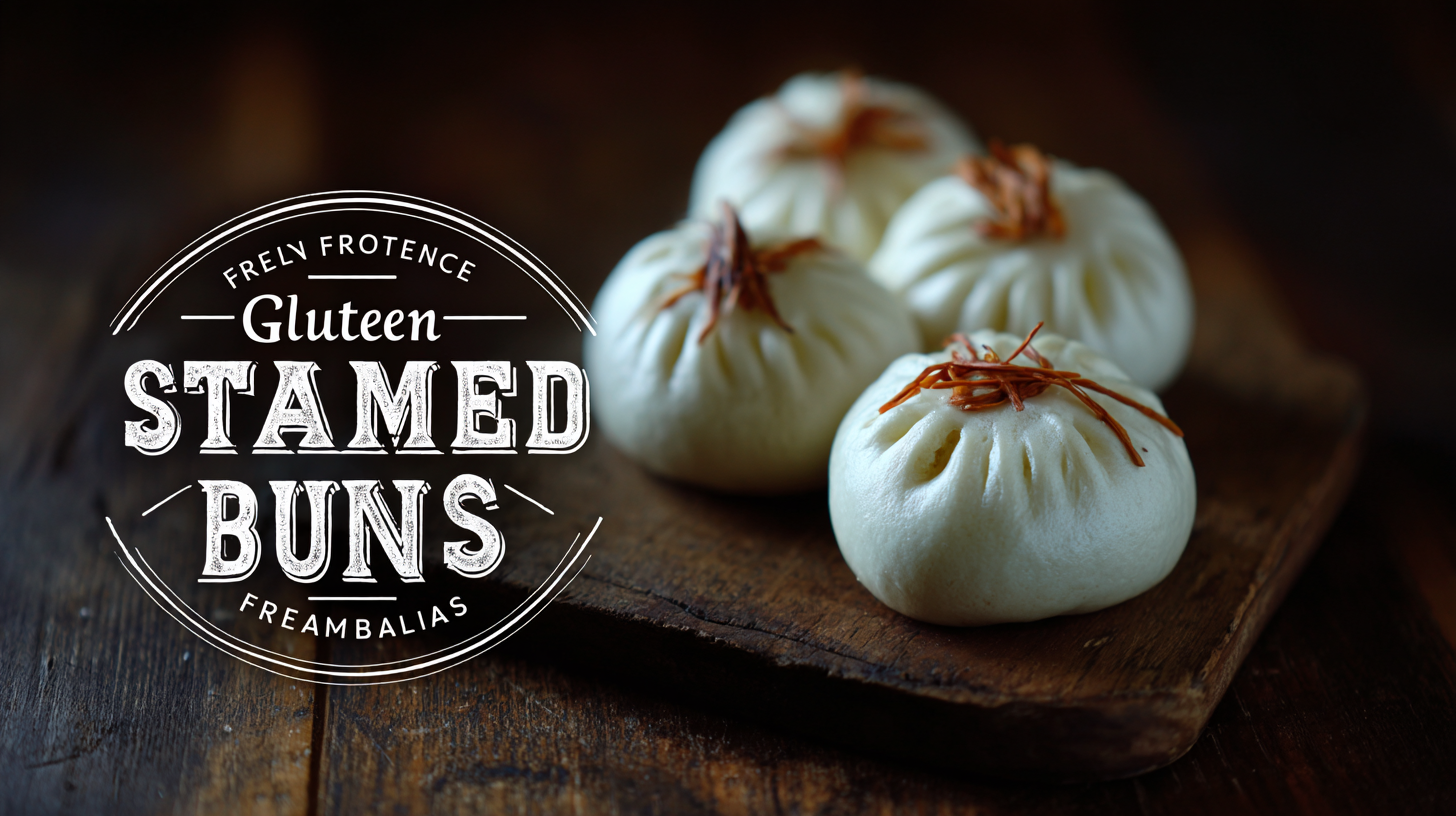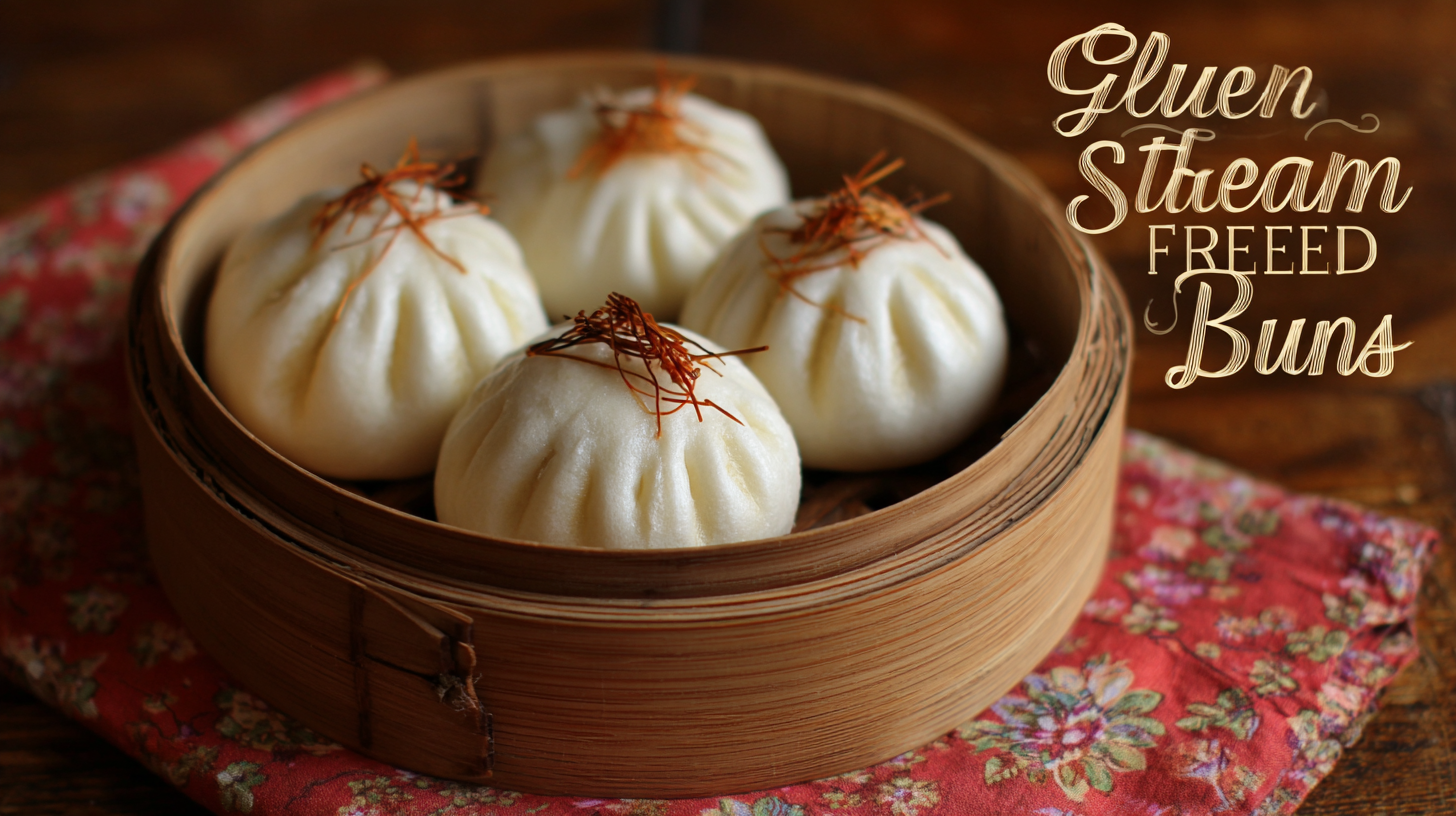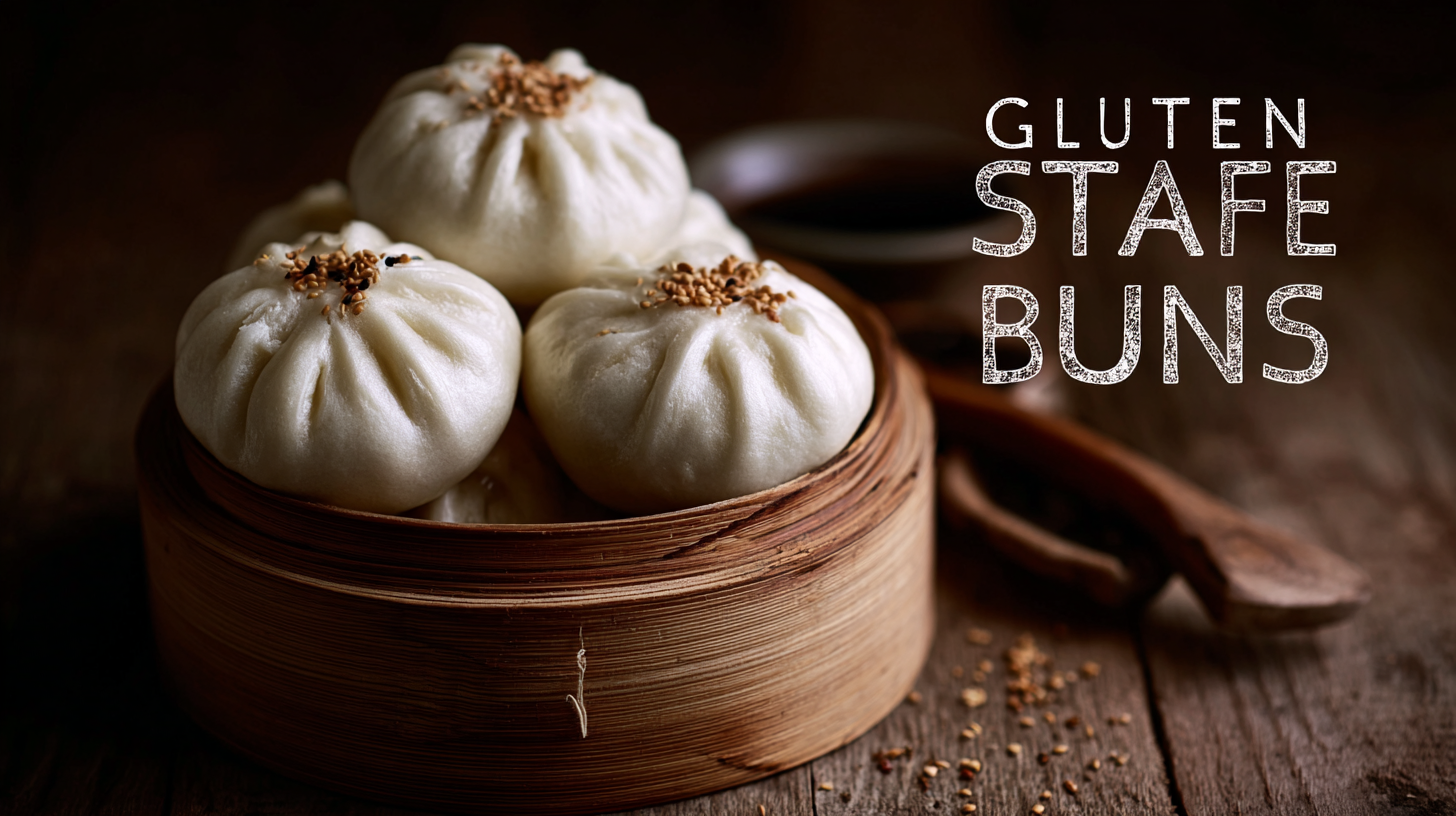
In recent years, the demand for Gluten Free Steamed Buns has skyrocketed, as more consumers seek delicious, healthy alternatives to traditional wheat-based products. As culinary enthusiasts and health-conscious individuals scour the globe for the best options, they are met with a diverse array of flavors and recipes. This blog aims to explore top strategies for sourcing these delectable, gluten-free delights, ensuring that regardless of where you are in the world, you can enjoy high-quality, authentic steamed buns.

With a commitment to "Globally Trusted Chinese Manufacturing", we emphasize the importance of quality and consistency in the production of Gluten Free Steamed Buns. By examining key factors such as ingredient sourcing, manufacturing processes, and the latest innovations in gluten-free technology, we hope to guide your journey toward finding the most satisfying and reliable gluten-free options available worldwide.
The global demand for gluten-free products has surged significantly, driven by rising consumer awareness about health and dietary restrictions. The gluten-free bread market, specifically, is projected to experience substantial growth, reflecting a broader trend within the gluten-free food sector. According to market reports, the gluten-free product segment is expected to expand from $28.73 billion in 2025 to approximately $40.31 billion by 2033, marking a compound annual growth rate (CAGR) of 4.6%. This growth pattern highlights a notable shift towards healthier alternatives among consumers.
Regional insights indicate that North America holds the largest share of this market, fueled by increasing occurrences of gluten intolerance and celiac disease among the population. The convenience of gluten-free options available in supermarkets, specialty retailers, and online platforms also plays a crucial role in sustaining market momentum. Additionally, the global baked enzyme market is projected to rise from $834.31 million in 2025 to $1.59 billion by 2033, with a CAGR of 8.42%, emphasizing the industry's response to evolving consumer preferences for gluten-free baked goods. The continued emphasis on quality ingredients, such as food-grade gums and natural stabilizers, further supports this market trajectory, ensuring a diverse and appealing range of gluten-free steamed buns globally.
The global demand for gluten-free products has seen remarkable growth, particularly in the realm of gluten-free steamed buns. According to a report by Grand View Research, the gluten-free foods market is projected to reach USD 43.4 billion by 2027, expanding at a compound annual growth rate (CAGR) of 9.1%. This surge is particularly noticeable in Asia, where traditional cuisines increasingly adapt to dietary restrictions and preferences. Countries like Japan and China have witnessed a rising interest in gluten-free options, spurred by both health-conscious consumers and those with celiac disease or gluten sensitivity.
In addition to Asian markets, the trend towards gluten-free steamed buns is gaining traction in North America and Europe. A study by MarketsandMarkets indicates that the European gluten-free food market is poised to grow at a CAGR of 8.3%, reaching USD 4.9 billion by 2025. This shift is attributed to heightened awareness of gluten-related disorders and the growing popularity of gluten-free diets among millennials. As manufacturers respond to these market dynamics, innovative sourcing strategies will be essential to ensure product quality and authenticity while capitalizing on this burgeoning sector.
| Region | Market Size (USD Million) | Growth Rate (%) | Key Ingredients | Consumer Trends |
|---|---|---|---|---|
| Asia | 1500 | 8.5 | Rice Flour, Tapioca Starch | Increasing demand for health-conscious options |
| North America | 800 | 6.7 | Almond Flour, Coconut Flour | Shift towards gluten-free diets |
| Europe | 600 | 5.5 | Buckwheat Flour, Quinoa Flour | Rise in food allergies and preferences |
| Australia | 300 | 7.2 | Sorghum Flour, Corn Starch | Growing interest in alternative diets |
Chinese producers are at the forefront of the gluten-free revolution, blending traditional techniques with modern innovation to craft high-quality steamed buns that cater to global palates. These manufacturers are leveraging centuries-old recipes and cooking methods, incorporating gluten-free grains such as rice and tapioca, to create products that preserve the beloved taste and texture of classic steamed buns. Their commitment to excellence not only highlights the culinary heritage of China but also meets the rising demand for gluten-free alternatives worldwide.
Moreover, the industry's focus on quality control and sustainable sourcing sets a benchmark for gluten-free manufacturing. Chinese producers are investing in state-of-the-art facilities equipped with advanced technology to ensure consistency and safety in their products. Collaborating with nutritionists and food scientists, they are continuously refining their recipes to enhance flavor and nutritional value. As they adopt international standards and certifications, these manufacturers are not just supplying gluten-free steamed buns; they are reshaping the global perception of gluten-free products, making them accessible and appealing to a diverse audience seeking healthier options.
 Quality assurance in gluten-free production is crucial for meeting the increasing consumer demand for gluten-free products, with the global gluten-free food market projected to reach $43.4 billion by 2027, according to a report by Grand View Research. Ensuring that gluten-free steamed buns meet rigorous quality standards not only satisfies consumer preferences but also builds brand trust. Key certifications such as Gluten-Free Certification Organization (GFCO) and the Celiac Support Association (CSA) provide clear quality benchmarks that producers must adhere to. These certifications verify that products contain less than 20 parts per million (ppm) of gluten, making them safe for individuals with celiac disease.
Quality assurance in gluten-free production is crucial for meeting the increasing consumer demand for gluten-free products, with the global gluten-free food market projected to reach $43.4 billion by 2027, according to a report by Grand View Research. Ensuring that gluten-free steamed buns meet rigorous quality standards not only satisfies consumer preferences but also builds brand trust. Key certifications such as Gluten-Free Certification Organization (GFCO) and the Celiac Support Association (CSA) provide clear quality benchmarks that producers must adhere to. These certifications verify that products contain less than 20 parts per million (ppm) of gluten, making them safe for individuals with celiac disease.
Tip: When sourcing gluten-free steamed buns, always check for these certifications on packaging or product descriptions. This not only provides assurance of safety but also enhances the credibility of your brand.
Another essential aspect of quality assurance is the use of dedicated equipment to prevent cross-contamination. A 2021 study by the Journal of Food Protection highlights that even trace amounts of gluten can pose serious health risks for those with gluten intolerance. Therefore, production facilities that prioritize gluten-free manufacturing must implement strict protocols for equipment use and employee training.
Tip: Establish a relationship with suppliers that demonstrate commitment to gluten-free practices, ensuring that your ingredients are sourced from dedicated facilities to maintain quality.
As the demand for gluten-free products continues to surge, innovative ingredients are taking center stage in the creation of gluten-free steamed buns. According to a recent report by Grand View Research, the global gluten-free products market is expected to reach USD 45.47 billion by 2027, growing at a compound annual growth rate (CAGR) of 9.2%. This trend is largely driven by the increasing prevalence of celiac disease and gluten sensitivity among consumers, prompting manufacturers to explore diverse ingredient options to meet consumer preferences for texture and flavor.

Among the innovative ingredients gaining popularity are rice flour, almond flour, and various starches derived from tapioca and potatoes. These alternatives not only cater to dietary restrictions but also align with shifting consumer preferences towards natural and wholesome ingredients. A survey conducted by Statista in 2021 revealed that over 25% of consumers consider gluten-free foods as a healthier option, further driving the use of quinoa and millet in recipes. Brands are focusing on incorporating high-quality, nutrient-rich components that enhance the overall taste and nutritional profile of gluten-free steamed buns, giving them a competitive edge in the market.
